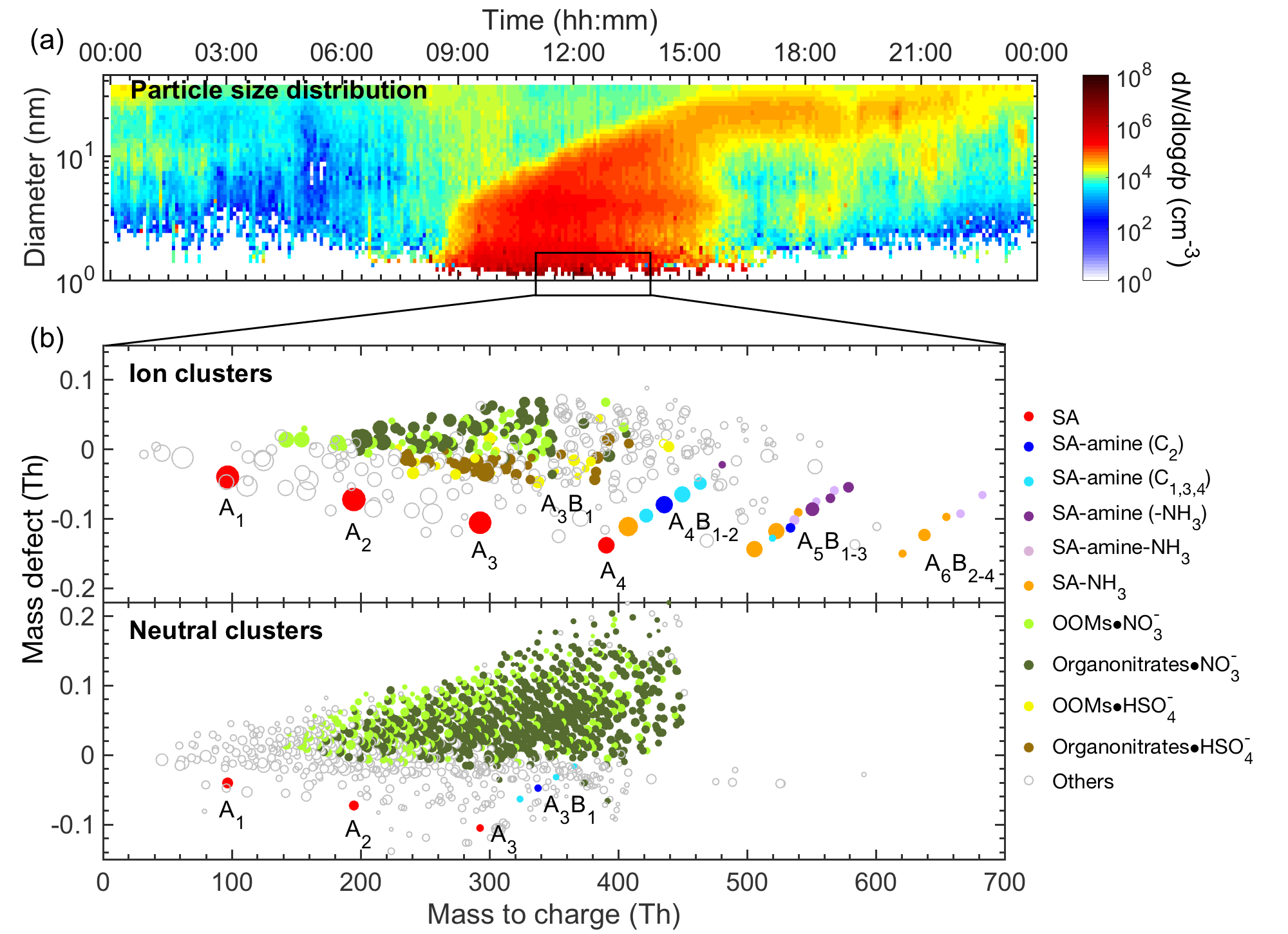The team led by Prof. Jingkun Jiang in the School of Environment at Tsinghua University has recently made new progresses key clusters for atmospheric New Particle Formation (NPF). Based on field measurements, quantum chemistry calculation, and chamber experiments, they revealed the compositions of atmospheric clusters and their correlation with newly formed nanoparticles in urban environment. The composition of both atmospheric ion clusters and neutral clusters during NPF periods were identified.
NPF refers to the process of gaseous molecules forming particles through homogeneous nucleation in the atmosphere, which is a significant source of atmospheric particles. NPF occurs in two stages. The first step involves the formation of molecular clusters from gaseous molecules. The second step is the subsequent growth of the clusters to larger size particles. As the formation of molecular cluster is the initial step, studying the composition of clusters has great significance for revealing the NPF process and the key gaseous precursors.

Particle size distributions (a), the composition of ion clusters and neutral clusters (b) in urban Beijing on Feb. 16th, 2018
It was found that clusters are initially formed by sulfuric acid (SA) molecules and amine molecules during NPF periods in Beijing and NH3 plays an important role for larger clusters. However, highly oxygenated organic molecules reported to contribute to the clustering in some clean atmospheric environments, participate less in the clustering process in urban Beijing. Moreover, as the cluster size increases, amine fractions in acid−base clusters decrease, while NH3 fractions increase. By calculating the average base number of ion acid-base clusters, the team quantified and compared the composition of ion acid−base clusters in urban site, clean site, and chamber experiments. They found that the average base number of amine in ion acid-base clusters in urban Beijing is lower than that in SA-dimethylamine (DMA) experiments, indicating that the DMA concentration during NPF in urban Beijing is lower than that in SA-DMA chamber experiments.
Their findings were recently published in Environmental Science & Technology. The first author is Rujing Yin, a Ph.D. student at the School of Environment. The corresponding author is Prof. Jingkun Jiang. Contributions were made by researchers from University of Helsinki, Beijing University of Chemical Technology, Dalian University of Technology, Fudan University, Nanjing University of Information Science and Technology, and University of Eastern Finland. The financial support is from the National Natural Science Foundation of China and Samsung Strategic Research Program.
Paper link: https://doi.org/10.1021/acs.est.1c02701





